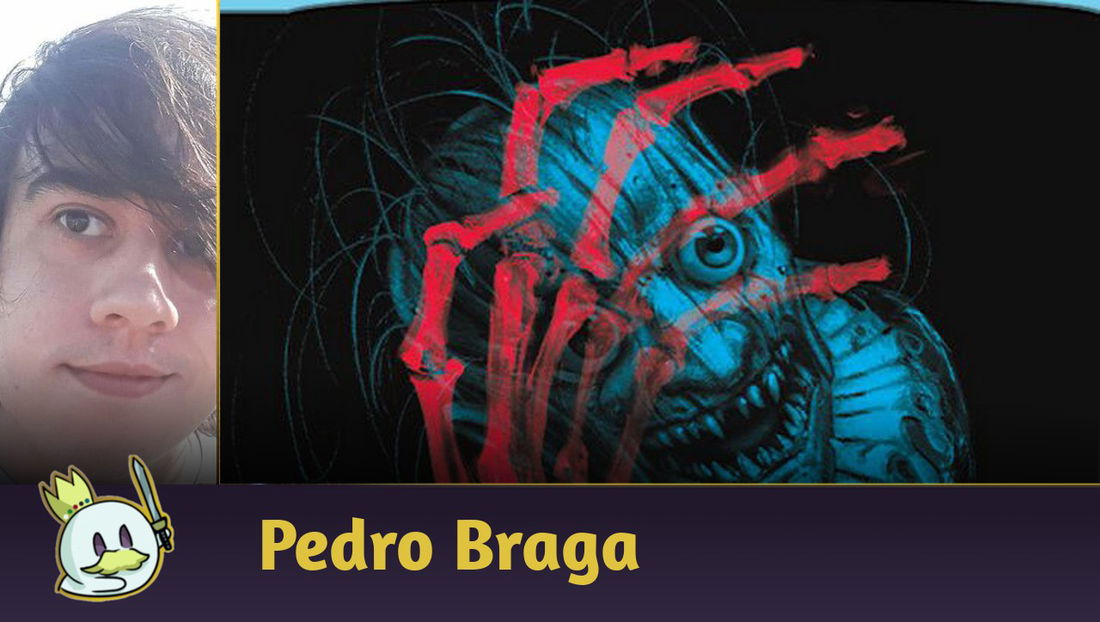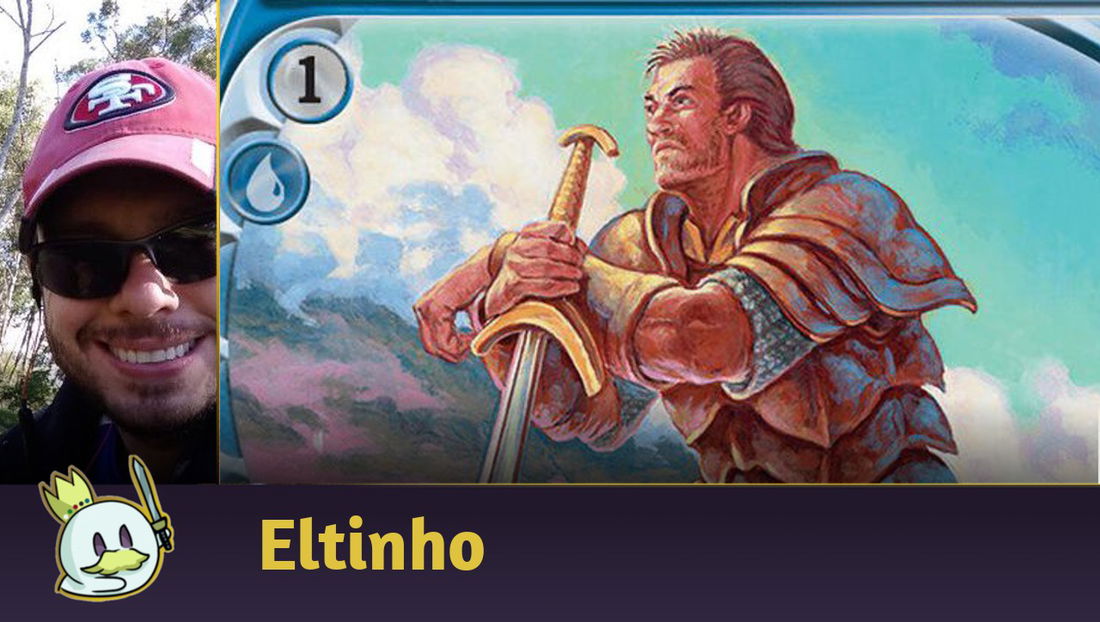Creatures are the second most important element of Magic: The Gathering. Over the decades, a game that was mostly based on cards in hand has gradually grown in relevance at the table and has focused mainly on the combat phase. This slow but effective process has improved every year as new creatures with increasingly powerful effects are released.
Today, Magic has more than 15,700 creatures - not counting permanents that transform into them - and among so many options, some have become references in the history of the game due to their impact on both design philosophy and deckbuilding theory and the common culture of players in relation to the main formats.
Ad
In this article, we present the ten most iconic creatures in Magic, based on their historical impact and reference point for the game!
The Most Iconic Creatures in Magic: The Gathering
Tarmogoyf

Tarmogoyf is, or once was, Magic's most iconic creature. Released in Future Sight and being a preview of the Planeswalker card type, players didn't pay much attention to it until its first tournament results. Goyf grew easily and didn't cost much until it became a 3/4, then a 4/5, and at some tables, a 5/6 for two mana - nothing could compete with it in the Magic where it shined.
For years, Tarmogoyf was a staple of Legacy and one of the pillars that supported Modern since its inception. Decks like Splinter Twin splashed green to include it in their lists, other archetypes like Jund used it as one of the core elements of their strategies, and its monetary value only grew with each passing year.
But the years passed, and what was once the best creature in history became obsolete due to power creep as new creatures with better and more efficient effects emerged. Today, it is not enough to just be a 4/5 for two mana, its ETB needs to be relevant, as well as its resilience to stay on the board. Tarmogoyf, however, is a legend of competitive Magic and a milestone in the game that taught many players the value of mana efficiency.
Lord of Atlantis & Goblin King

Lord of Atlantis may be more popular at competitive tables, but it wasn't alone in Alpha in starting a trend that would continue in Magic: The Gathering for thirty years: the existence of type-based lords - creatures that give +1/+1 and, occasionally, some ability to others that share the same type.
Over the years, Merfolks and Goblins have become two of the most iconic creature types in Magic. Goblins, for example, were one of the best decks in Standard during the Onslaught block era and also established themselves as a competitive bet in Legacy for almost a decade.
Merfolks, on the other hand, only exploded in popularity with Lorwyn and has been a viable strategy in Modern and Legacy ever since, even if they haven't shown as impressive results as other archetypes that don't rely on synergies.
The existence of Goblin King and Lord of Atlantis in Alpha paved the way for all the Types we know today: from the most famous ones like Vampires and Elves to some lesser known like Shamans and Warriors.
Man-o’-War

Man-o’-War became obsolete very early in Magic, but its release and competitive viability was a historic milestone in the game by demonstrating the benefits of a category that has become the core of game design in today's philosophy - the value of ETB effects.
Along with Nekrataal, it was the first step for players to explore the concepts of two-for-one and Tempo efficiency in creatures: if your opponent paid 

Ad
Although we have had several glorified variants of its effect in Magic this decade, the impact that this creature had on both deckbuilding and the gameplay and design philosophy of MTG is undeniable.
Delver of Secrets

Delver of Secrets left a historic mark on Magic. Where once all Blue-based Tempo decks had a distinct name, like Canadian Threshold or Team America, it essentially aggregated everything into a single archetype - Delver. Over the years, its name not only referred to the card's use, but also became a reference for how a Tempo deck should function: low-cost spells, cheap threats, and a way to disrupt your opponent's plans while exerting pressure for the lowest possible mana.
Like Tarmogoyf, Delver of Secrets also suffers in part from the signs of the times. Once one of the most important pillars of Legacy, today it has to share that space with Dragon's Rage Channeler and Psychic Frog - both creatures are more efficient than the original in their category. In Pioneer, it doesn't even see space in the competitive scene, and its glory days in Standard were stuck in the last decade.
Despite its decline, the name Delver is still a reference for Tempo decks in all formats, regardless of how many years have passed since Modern Horizons 2 usurped the throne of the Legacy king.
Birds of Paradise

Birds of Paradise was the first mana dork in Magic's history (alongside Llanowar Elves) and to this day, it is a reference among the best cards in its category. Its simple but efficient design placed it in the competitive Metagame for decades until Wizards decided that a one-mana ramp was too dangerous with the increasing power creep and efficiency of ETB effects in Standard, forcing an increase to two mana value in cards that generate any color.
Its design remains relevant to this day, whether in its occasional inclusion in Modern decks (although less frequent due to the release of Orcish Bowmasters) or in the number of cards that take on bolder proposals with its ability, such as Delighted Halfling or the banned in multiple formats Deathrite Shaman.
Morphling

Morphling introduced another concept in Magic creatures that was still little explored at the time: flexibility. With enough mana, it was whatever its controller wanted - it could protect itself with Shroud, gain Flying to attack with evasion, transform into a 5/1 for a four-turn clock, block and survive any combat and could even be untapped after damage - before M10, it was possible to create micro-interactions with it and the use of damage on the stack.
Its legacy may not be a reference today because activated abilities need to be excellent to compete - and the closest we've had to Morphling making a competitive impact in recent years was Aetherling, and that was over a decade ago. But its presence in competitive Magic was another important lesson for both the design team and players.
Ad
Emrakul, the Aeons’ Torn

Emrakul, the Aeons’ Torn is what happens when a group imagines the most absurd amount of abilities possible for the highest imaginable, yet still playable, mana value. 15 mana for a 15/15 that basically clears the board when it attacks, can't be countered, and still gets an extra turn is the dream play of almost every Magic player at some point.
The original Eldrazi Titan joins a long list of creatures that players try to cheat mana values with at all costs. Whether with Show and Tell, Through the Breach, Goryo’s Vengeance, among others, Emrakul, The Aeons’ Torn has established itself as one of the best viable options in its category, competing mainly with Atraxa, Grand Unifier, which fits better in Reanimate strategies and/or in archetypes that just want to generate a lot of value instead of going for a combo-kill.
Colossal Dreadmaw

If you haven’t come across a meme about Colossal Dreadmaw yet, you haven’t been in the Magic social media bubble long enough. It's unclear exactly when the Dreadmaw meme first came about - before it, Vizzerdrix was seen as the game's "meme card" to the point that some people collected it just for the laughs, but Wizards of the Coast went much further with Colossal Dreadmaw to the point of embracing it as a meme.
Whether with references like Dreadmaw's Ire and Colossal Dreadmask, or with other versions of it like Phantasmal Dreadmaw and Earthshaker Dreadmaw, this creature has become something of a living legend in Magic lore - and there's no sign of that changing any time soon.
True-Name Nemesis

True-Name Nemesis could be said to have been a harbinger: the first card from a Commander-only product to directly impact competitive Magic by becoming a Legacy staple. Its ability, designed for multiplayer play, became an important asset for Legacy blue decks, as it essentially provided “protection from everything” for three mana.
While it wasn’t the first card from a Commander set to impact eternal formats (Scavenging Ooze came first), True-Name Nemesis’s design is a good example of a chain reaction that became the norm for Legacy, Vintage, and even Pauper in later years—that of cards and mechanics dedicated to multiplayer affecting their respective Metagame in unexpected ways.
Ragavan, Nimble Pilferer

There are many cards that we can use to exemplify power creep in Magic: Siege Rhino, Uro, Titan of Nature’s Wrath, the elementals from Modern Horizons 2, among others that also fit into this category. But Ragavan, Nimble Pilferer is probably the most well-known and infamous among them that isn't an admitted design mistake.
Ragavan is Jackal Pup on many steroids. He's the Savannah Lions that shoots lasers, the Tarmogoyf that doesn't need to grow to be good and puts any source of traditional card advantage on the bench. Not only is he a 2/1 for one mana with Dash 
Ad
But its reign in Modern eventually came to an end: Orcish Bowmasters was a surgical response that Lord of the Rings brought to deal with Ragavan, and its potential for Metagame dominance is even greater - a further proof of how power creep works in Magic, especially now that the pendulum is starting to swing back towards card advantage enablers with Psychic Frog.
Conclusion
That's all for today!
If you have any questions or suggestions, feel free to leave a comment!
Thanks for reading!










— Comentarios0
Se el primero en comentar